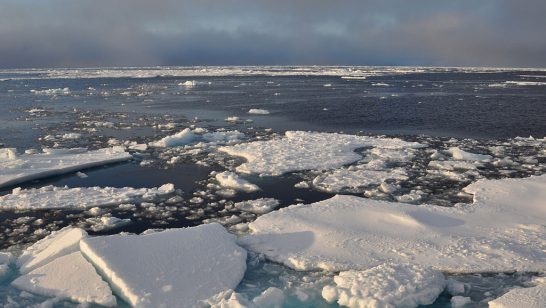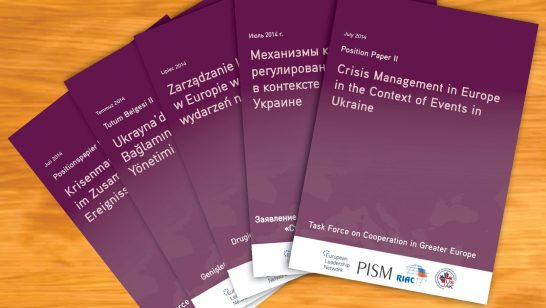
Iraq 2003 was the low point of the European Union (EU)’s ambitions to establish common policies in the field of international security. Yet, only months after the ruptures caused by alleged Weapons of Mass Destruction (WMD) programmes in that country, EU member states were able to agree for the first time on a comprehensive document outlining the Union’s priorities and preferred means in the area of non-proliferation, the so-called EU WMD Strategy. In historical perspective, this was a major step forward. In the preceding 20 years, it had been very difficult to implement common policies on non-proliferation due to the existing divisions amongst European states. For instance, it was only in 1993 that the last EU member state, France, joined what is considered to be today the spinal column of the global non-proliferation regime, the Nuclear Non-Proliferation Treaty. Yet, ten years after the adoption of the EU WMD Strategy the overall situation now looks remarkably different.
Although the EU has tried to increase the visibility of its non-proliferation efforts – most notably through the establishment of the EU Non-Proliferation Consortium, the EU’s progress has remained largely unnoticed. However, it is timely to highlight progress in at least three areas: First, despite persistent disagreements in areas such as nuclear disarmament, European views on non-proliferation have converged over time. For example, nowadays all EU member states have ratified or are members of virtually all international non-proliferation agreements and institutions, including the Nuclear Non-Proliferation Treaty and the Comprehensive Nuclear Test Ban Treaty.
Second, the EU has been able to set up a specific unit dealing with non-proliferation issues. Even though the establishment of the European External Action Service in the wake of the 2009 Lisbon Treaty led to a transitional shake-up, in particular when Annalisa Giannella, the former Personal Representative for Non-Proliferation retired at the end of 2010, important changes were in place by 2013. Most notably, the EU’s working group on non-proliferation has substituted its 6-montly rotating presidencies with a permanent chair and Jacek Bylica, the former head of the NATO WMD Non-Proliferation Centre has become the new Principal Adviser and Special Envoy for Non-proliferation and Disarmament.
Third, the EU has become much more active in matters of non-proliferation. The most visible activity has been the EU/E3 involvement in the negotiations with Iran, where the EU’s High Representative – first Javier Solana and later Catherine Ashton – played a pivotal role as lead negotiators. In 2012, the EU also adopted unprecedented sanctions against Iran, in particular an oil embargo. Less visibly, the EU has also taken practical steps and increased substantially its funding for concrete non-proliferation programmes: On the one hand, between 2004 and 2013, the EU has spent around €125 million of the budget of the Common Foreign and Security Policy for projects implemented by international non-proliferation organizations, in particular regarding the nuclear security work done by the IAEA, where the EU has become a key donor.
On the other hand, the EU earmarked €300 million for non-proliferation related activities as part of its Instrument for Stability (2007-2013), which substituted earlier regional programmes, especially in the former Soviet Union. Whereas the Instrument dealt initially with individual projects in areas such as export control or knowledge management, the recent focus has been on the establishment of a global network of so-called CBRN Centres of Excellence to improve chemical, biological, radiological and nuclear risk mitigation. In practice, it has been sometimes difficult to trace the concrete impact of the EU’s activity, but in general it is fair to argue that EU funding makes a difference in the long-term, for example by strengthening the capabilities of international non-proliferation organizations.
However, in other areas progress has been limited. The EU has certainly not become a fully-fledged non-proliferation actor during the last ten years. The most important shortcoming concerns the internal coordination of non-proliferation efforts among EU member states and EU institutions as foreseen by the so-called New Lines for Action, which updated the EU WMD Strategy in 2008. More specifically, this document calls for several innovative steps to improve non-proliferation policies, including the involvement of private sector actors such as financial institutions or scientific and academic communities; harmonising proliferation-specific criminal sanctions; or improving the fight against the financing of proliferation activities. But progress in these areas has been slow at best. Even in the more advanced field of common export controls of dual-use items, the coordination and harmonization of common national policies could have progressed more.
All in all, the EU’s performance has been substantially better than was expected when the 2003 EU WMD Strategy was launched. Although many analysts believed at that time that the Strategy constituted a comprehensive document, few thought that the EU would be able to turn the Strategy’s provisions into tangible outputs. Yet, only ten years later the EU has become a key actor in the Iranian nuclear crisis, it has funded numerous non-proliferation projects in international organizations and it is about to establish a global network of CBRN Centres of Excellence. Nonetheless, a lot of work is still left, in particular concerning the coordination of non-proliferation policies between EU member states and the visibility of the EU’s policies. Moreover, there is always the danger that the EU’s efforts will run out of steam over time. It will be the key task of the new Principal Adviser and Special Envoy for Non-proliferation and Disarmament to keep up the momentum and secure the necessary funding in the EU’s financial perspectives 2014-2020.
This article summarizes some of the results published in the article ‘A European contribution to non-proliferation? The EU WMD Strategy at ten’ in the September 2013 issue of International Affairs, the Chatham House journal.
Please visit: http://www.chathamhouse.org/publications/ia
The opinions articulated above represent the views of the author(s), and do not necessarily reflect the position of the European Leadership Network or any of its members. The ELN’s aim is to encourage debates that will help develop Europe’s capacity to address the pressing foreign, defence, and security challenges of our time.



